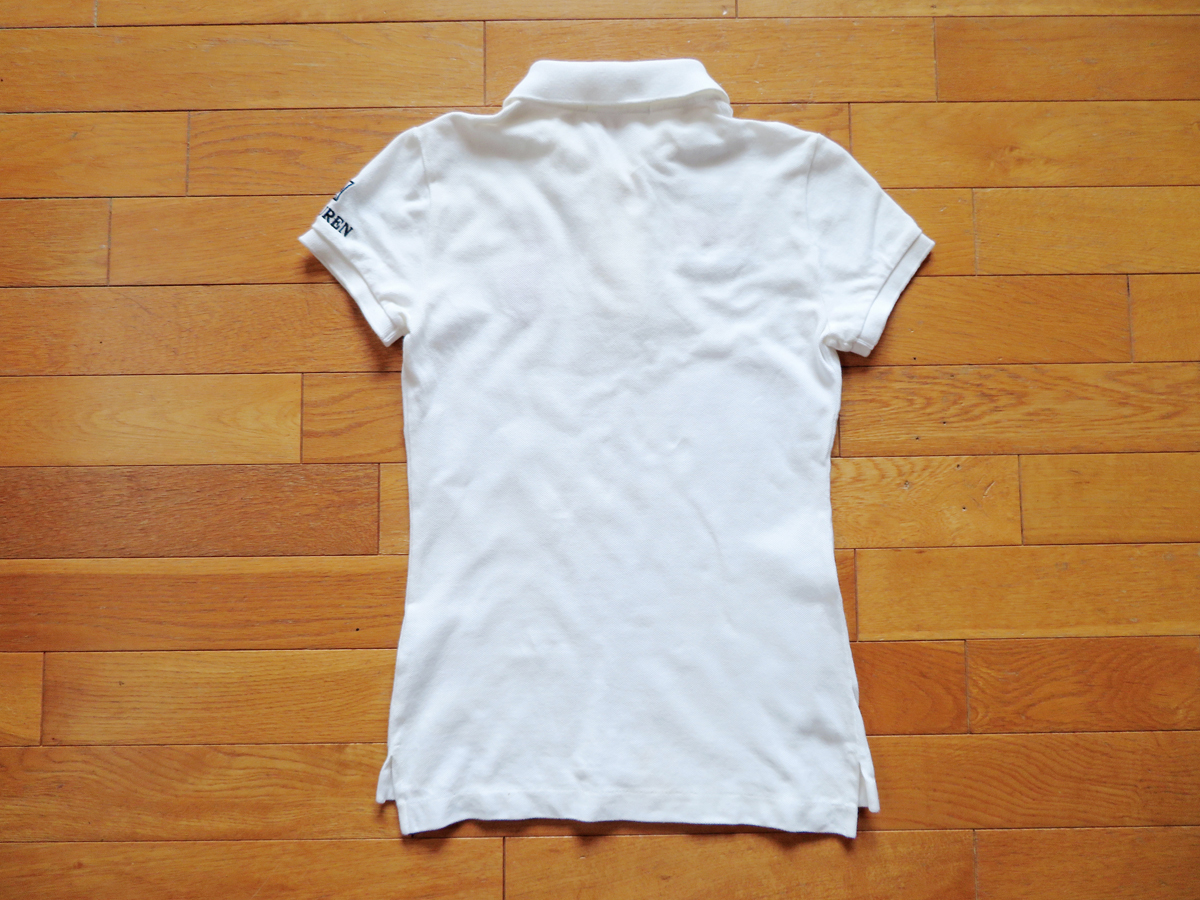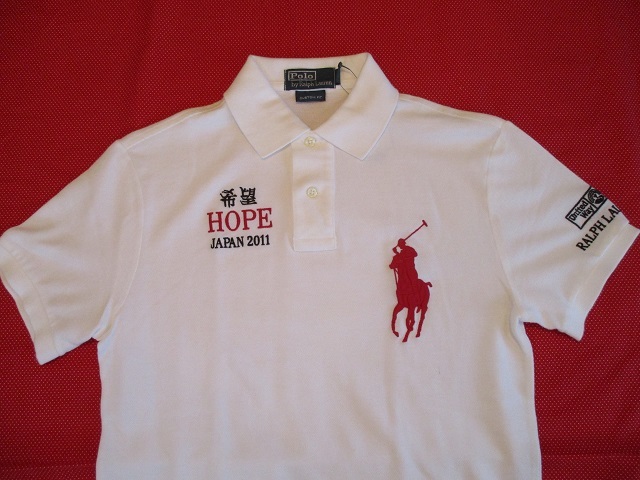ラルフローレン 世界限定 東日本大震災 チャリティ ポロシャツ レディース 白
(税込) 送料込み
商品の説明
ラルフローレン 限定デザイン 東日本大震災 チャリティ ポロシャツとなります。
ハワイの友人から譲ってもらいました。
2011年日本限定仕様の販売もありましたが、バックプリントがありません。
同仕様はなかなか流通しない品と思われます
10年ほど、着用せずクローゼットに保管しておりましたが、多少の経年劣化があります。(写真にて確認下さい)
NCNRにてお願い致します。
ラルフローレンが好きな方に購入して頂けたらと思います。
#ラルフローレン
#限定仕様
#東日本大震災チャリティ
「未曾有の被害を日本にもたらした3月11日の東日本大震災。混乱も収まらぬそのわずか10日後に、ラルフ ローレンは復興ポロシャツの世界同時リリースを行った。
「JAPAN HOPE」と名付けられたそれはブランドのアイコン的存在のポロシャツに「JAPAN」「希望」と書かれたもの。売り上げの全額が赤い羽根共同募金を通じて寄付された。」
よろしくお願いします。商品の情報
| カテゴリー | レディース > トップス > ポロシャツ |
|---|---|
| 商品のサイズ | M |
| ブランド | ポロラルフローレン |
| 商品の状態 | やや傷や汚れあり |

大注目】 チャリティ 東日本大震災 世界限定 ラルフローレン

ラルフローレン ポロシャツ 震災チャリティー限定品 | udaytonp.com.br

最も優遇の ラルフローレン 世界限定 東日本大震災 チャリティ

ラルフローレン ポロシャツ 震災チャリティー限定品 | udaytonp.com.br

最も優遇の ラルフローレン 世界限定 東日本大震災 チャリティ

ワンピなど最旬ア! 【希少 ビックポロベア】 NO1254 レディース

最も優遇の ラルフローレン 世界限定 東日本大震災 チャリティ

ラルフローレンが発売した日本復興ポロシャツのデザインが話題

女性が喜ぶ♪ Christian Dior トロッター柄ノースリーブポロシャツ

最適な材料 裾リブ付き半袖ポロシャツ ラコステ ポロシャツ - elroble

限定販売】 ノースリ ケーブル ポロシャツ ポロシャツ - muniporoy

最も優遇の ラルフローレン 世界限定 東日本大震災 チャリティ

品多く Hina様 専用 ポロシャツ - elroble.apde.edu.gt

逆輸入 kon ポロシャツ - liga-podil.pp.ua

全ての LEONARDのポロシャツ ポロシャツ - liga-podil.pp.ua

ラルフローレンが発売した日本復興ポロシャツのデザインが話題

限定販売】 グッチ ポロシャツ ロゴ 茶色 ポロシャツ - www

2022超人気 フレッドペリー ポロシャツ ポロシャツ - andriolaesanches.com

開店記念セール!】 希少 クリスチャンディオール 半袖ポロシャツ 刺繍

大量入荷 FENDI ポロシャツ ズッカ柄 ポロシャツ - www.mercermedwell.com

在庫有】 leinwande knit polo ポロシャツ - adenuncia.ao

Yahoo!オークション - ☆【新品・未使用・タグ付き】☆Polo by Ralph

最も優遇の ラルフローレン 世界限定 東日本大震災 チャリティ

憧れ TOKYO MER レプリカ MERスクラブ ナース ポロシャツ - adenuncia.ao

パーティを彩るご馳走や お値下げ 新品未使用 45R スーピマカノコ

今ならほぼ即納! / Supreme Hanes XL Briefs Boxer Bandana ボクサー

トミーヒルガー 紺色 ゆったり 高評価の贈り物 36.0%割引 cursodefoto

割引購入 Burberrys ベージュ ポロシャツ ノバチェック バーバリー
ポロ ラルフローレン ポロシャツ 半袖 レディース ウィメンズ

2022春の新作 PERRY FRED / ポロシャツ Tipped Twin ポロシャツ

POLO RALPH LAUREN - ポロラルフローレン ポロシャツ 白 ホワイト M

POLO RALPH LAUREN - ラルフローレン ポロシャツ レディースLの通販

ポロ ラルフ ローレン、チャリティポロシャツを展開。 | Vogue Japan

2023年最新】ラルフローレンレディースポロシャツの人気アイテム

即納】 【シャネル】美品 女性 サングラス ヴィンテージ べっ甲柄 定価

≪超目玉☆12月≫ アルマーニ コート ロングコート - vairalda.lt

スパイラルガール ロングガウン 適当な価格 djecija-knjiga.ba

POLO RALPH LAUREN - ラルフローレン ポロシャツ レディースLの通販

Yahoo!オークション - ☆【新品・未使用・タグ付き】☆Polo by Ralph

POLO RALPH LAUREN - ポロラルフローレン ポロシャツ 白 ホワイト M









商品の情報
メルカリ安心への取り組み
お金は事務局に支払われ、評価後に振り込まれます
出品者
スピード発送
この出品者は平均24時間以内に発送しています














